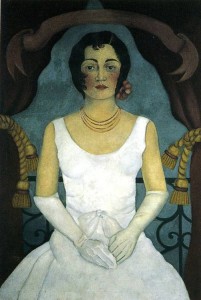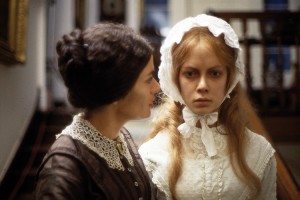At first glance, Percival Glyde and Anne Catherick share almost nothing in common–he’s an esteemed Baronet with crippling debts, and she’s an escapee from an Asylum. However, as Wilkie Collins’ The Woman in White progresses, these two characters exhibit surprisingly similar backgrounds: most plainly, the issues of both of their parentages.
The Secret™ that would ruin Glyde’s life, that Anne claimed to know, that Walter Hartright discovered in the discrepancies between the church records at Old Welmingham, is that his parents never married–in fact, his mother was technically still married to an Irishman, though they had since gone their own ways (531). This made Percival an illegitimate child, unable to truly claim his father’s property at Blackwater…unless he resorted to unsavory means.
After some sleuthing by Walter, it was revealed that Anne, too, was the product of an illegitimate union. “Philip Fairlie had been at Varneck Hall in the autumn of eighteen hundred and twenty-six, and that Mrs. Catherick had been living there in service at the same time (…) Anne had been born in June, eighteen hundred and twenty-seven” (553). However, in this circumstance, Anne’s parents did not remain together–their affair was brief , especially as Philip Fairlie “then left (…) and did not return to Varneck Hall till after a lapse of time, when he reappeared in the character of a newly-married man.” (553) Walter suspects that Anne did not even guess her true parentage–certainly she would have been unable to act upon it as Percival did, even if she was aware. She had no claim to the Fairlie fortune or estate, not to mention the fact that the legitimate Fairlie heir was very present, as opposed to the situation Percival found himself in.
With these similar origins of being born the illegitimate children of well-off men, it is interesting that Anne and Percival are so at odds in the narrative, and perhaps demonstrates the imbalance of power between Victorian women and men. Percival, a man, is made aware of his own “claim” to the Blackwater estate, and does everything he can to claim it, including forging a marriage record, blackmailing Mrs Catherick, and even shutting Anne away when it seems as if she might be too close to revealing The Secret™. Anne, a woman, is first of all described as “being always weak in the head” (534) by her own mother, and her true parentage is hidden from her. She is rejected by Mrs Catherick (perhaps her similarity to her father reminded Mrs Catherick of her own past mistakes?), and ironically receives some motherly affection from Mrs Fairlie, the wife of her true father.
However, the one direct confrontation between Percival and Anne, that leads to Anne’s imprisonment and drives almost the entire plot of the story, comes because Anne speaks up for herself against Percival’s dismissal of her as “the idiot” (536). In Mrs Catherick’s words, “she had always had crazy notions of her own about her dignity,” (536)–in order to gain the upper hand on Percival and establish her presence, Anne used the one thing she had heard that could potentially ruin him–a practice which backfires spectacularly on her, as this leads to Percival demanding she be shut up in an Asylum, a place where she would have even less dignity and autonomy than she had living with her mother. Anne is stripped of all power as Percival gains more.
The two illegitimate children of the narrative are treated incredibly differently, and what this unequal treatment seems to highlight is the unequal power afforded each gender in Victorian society.

